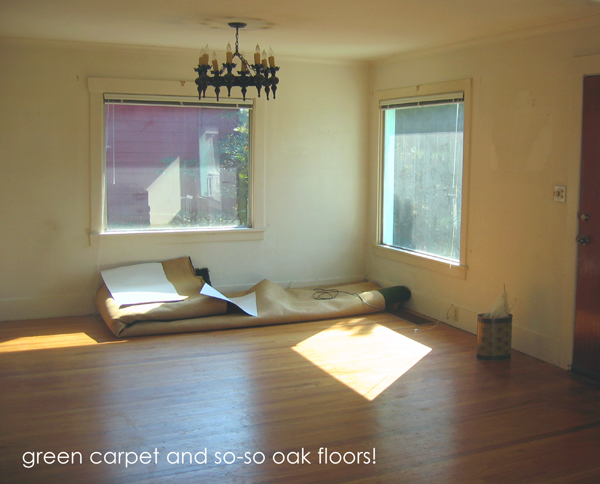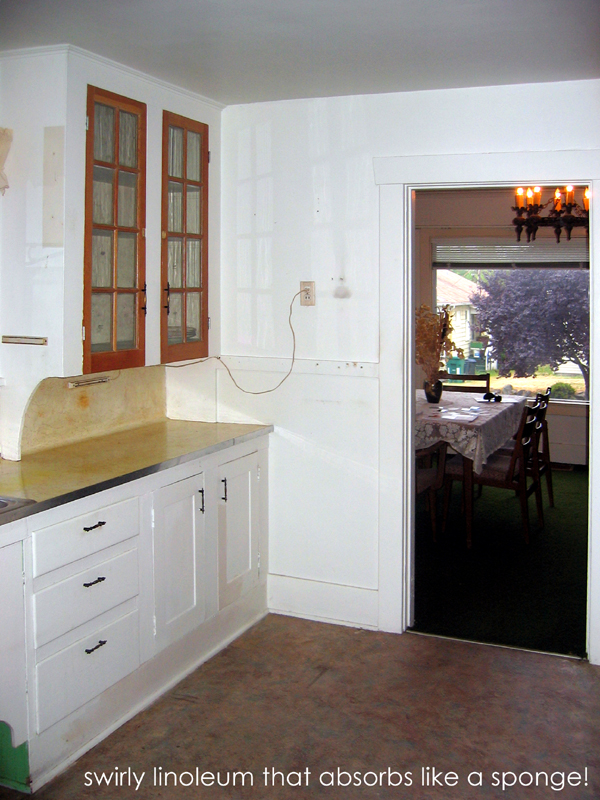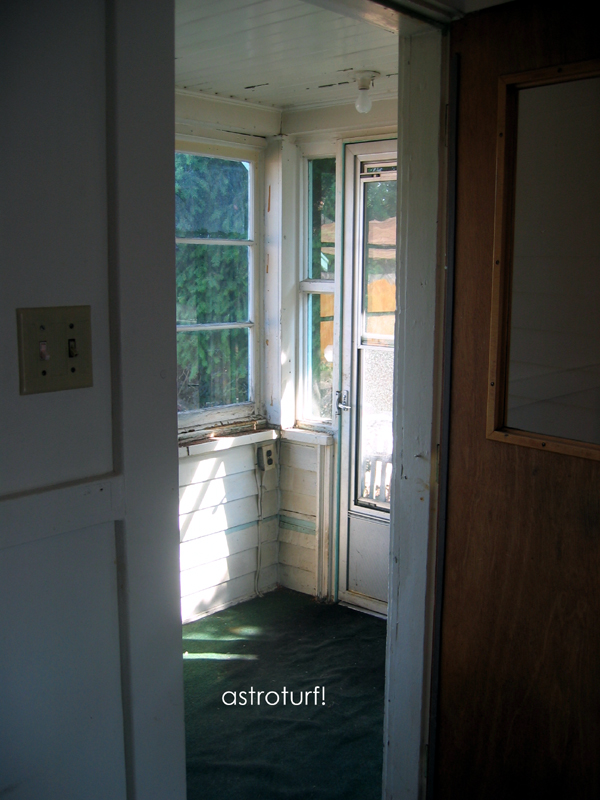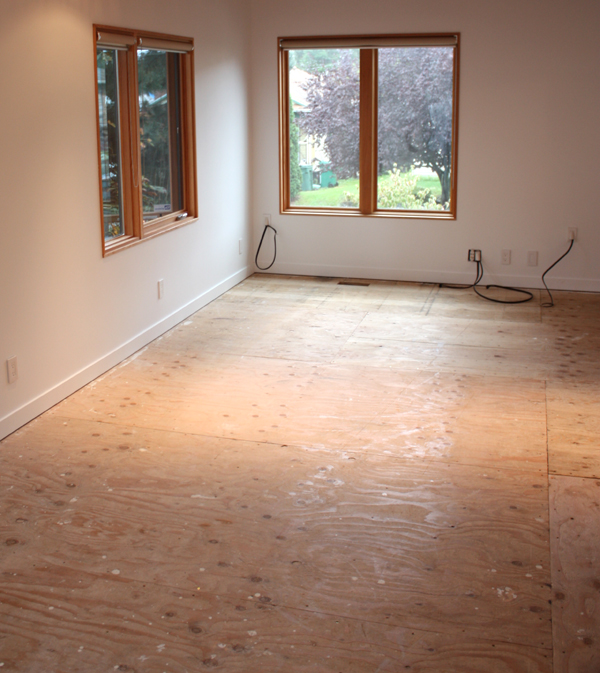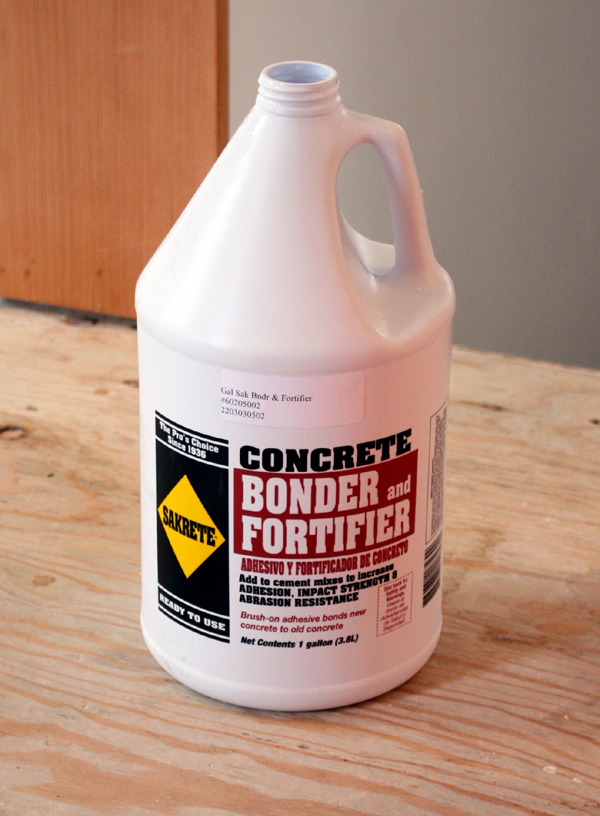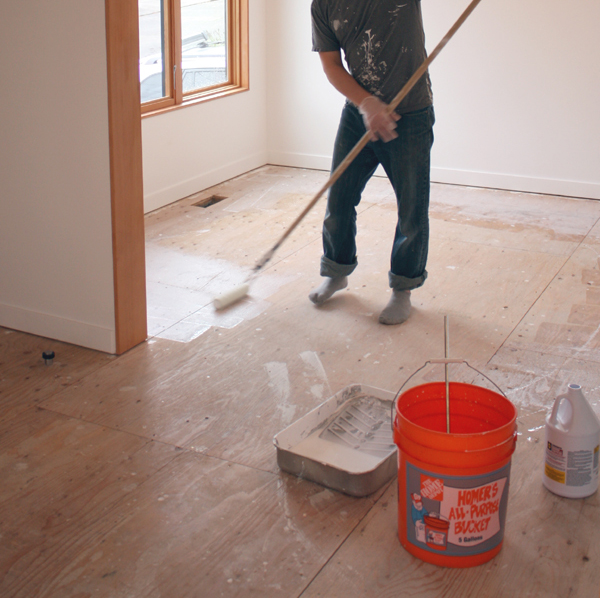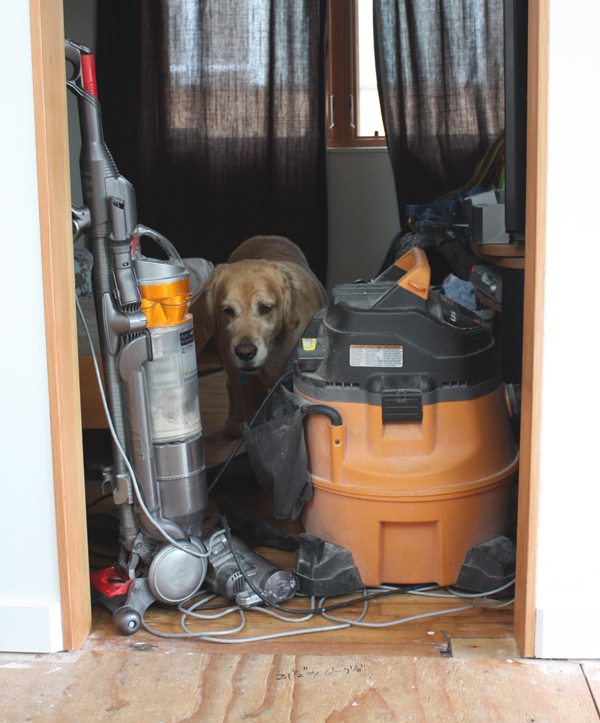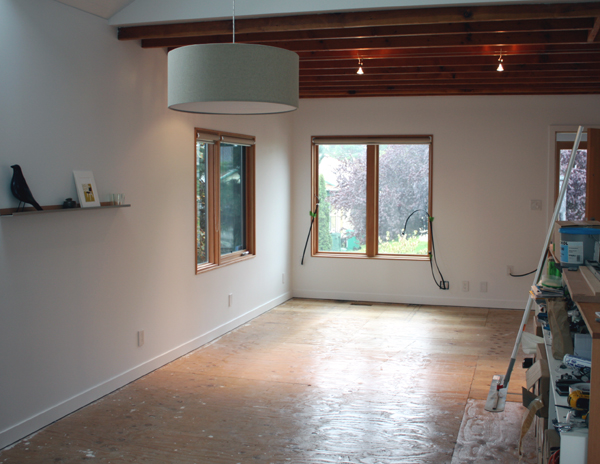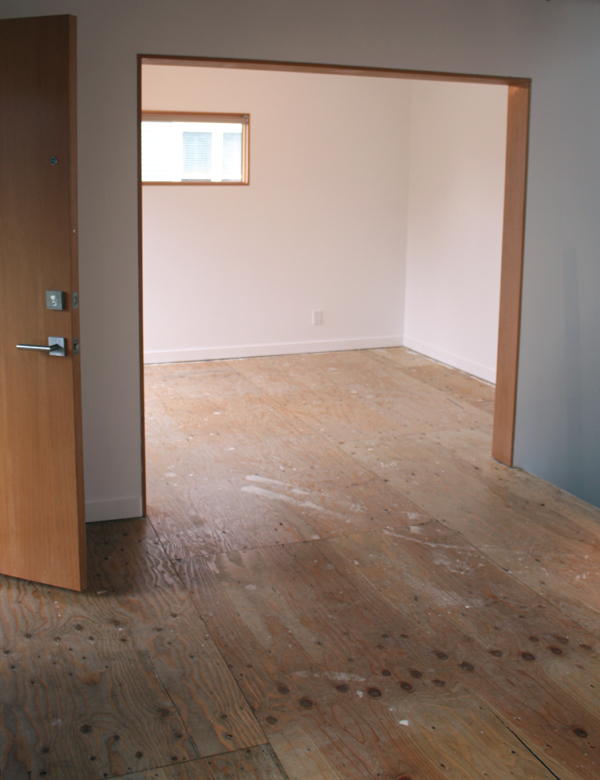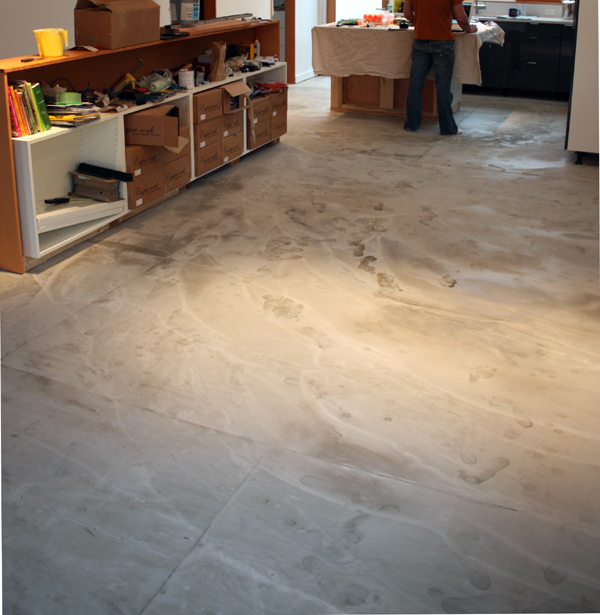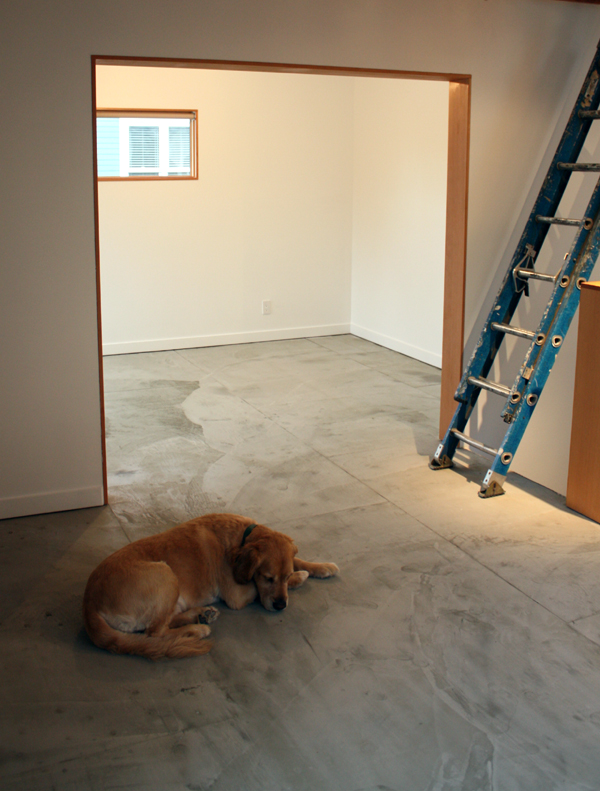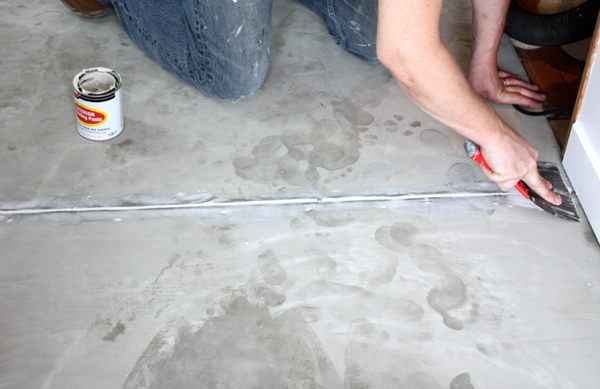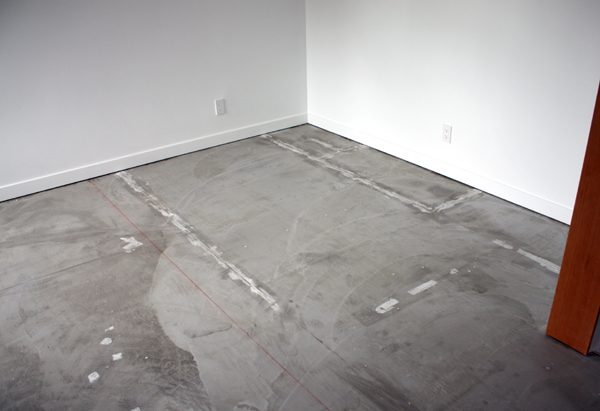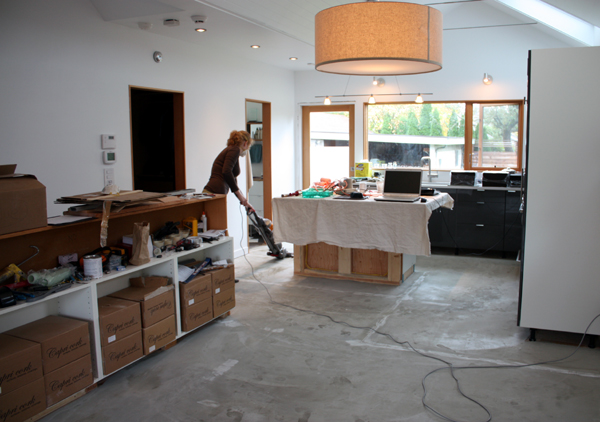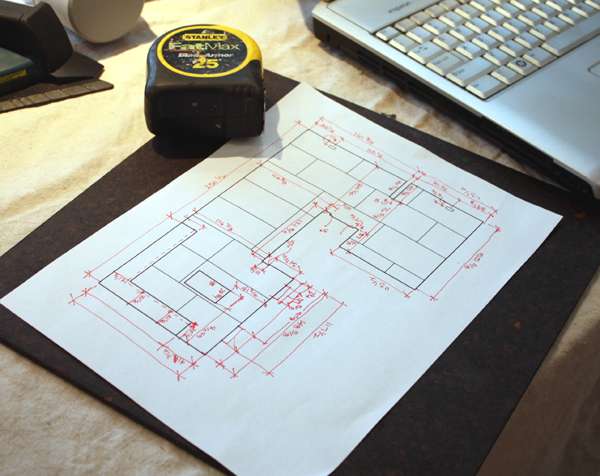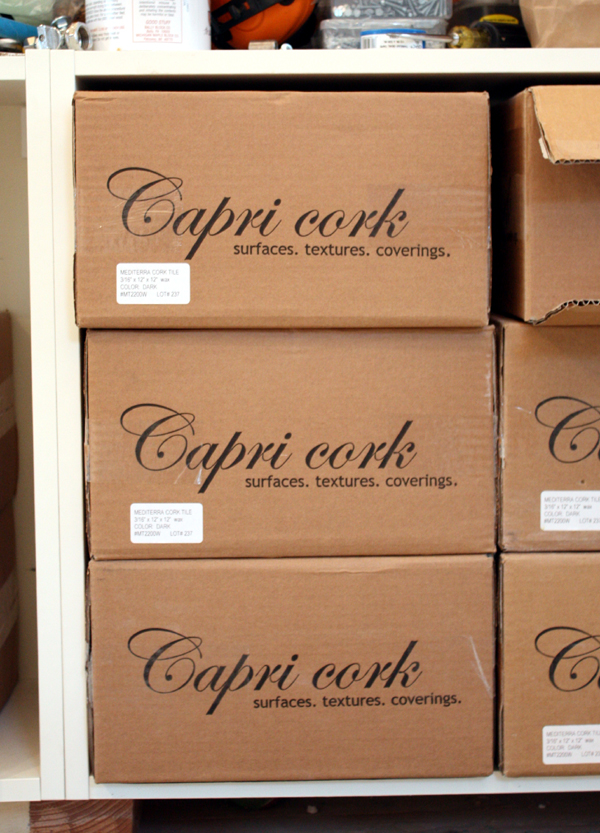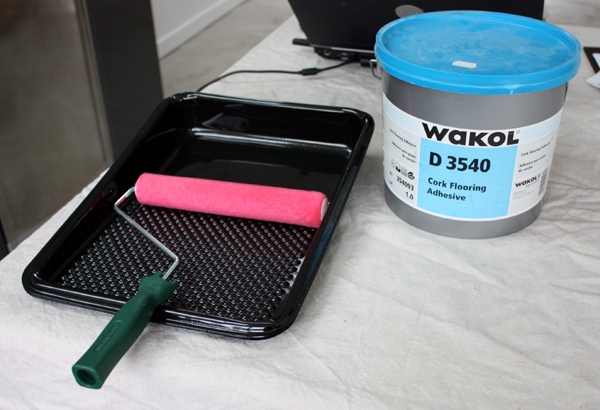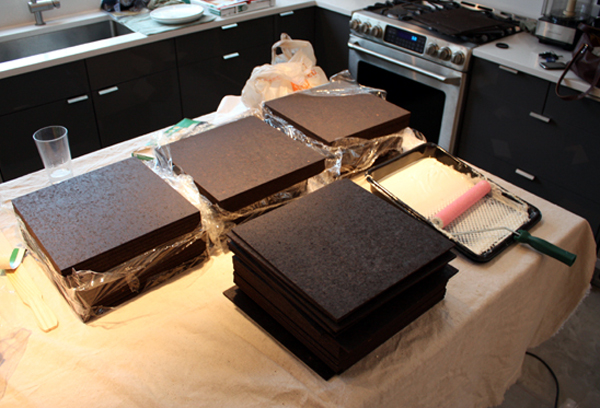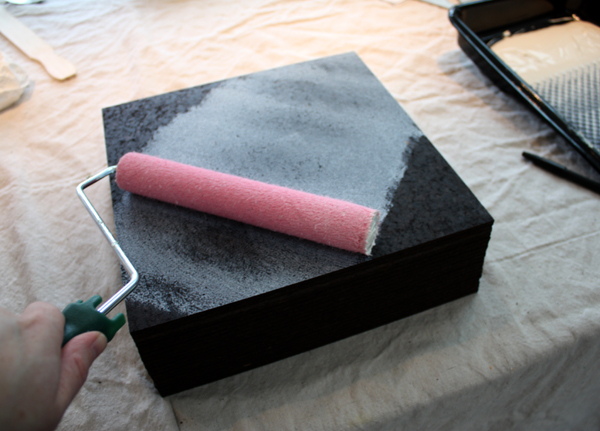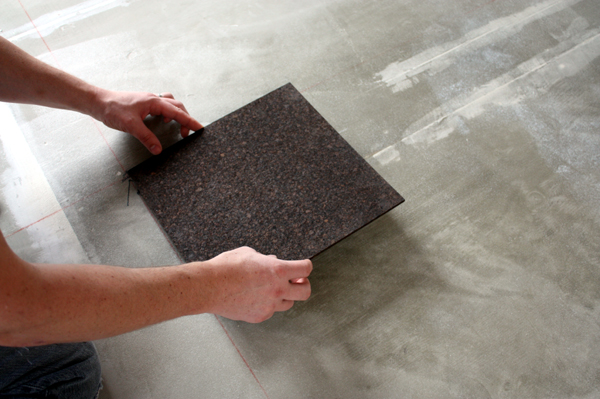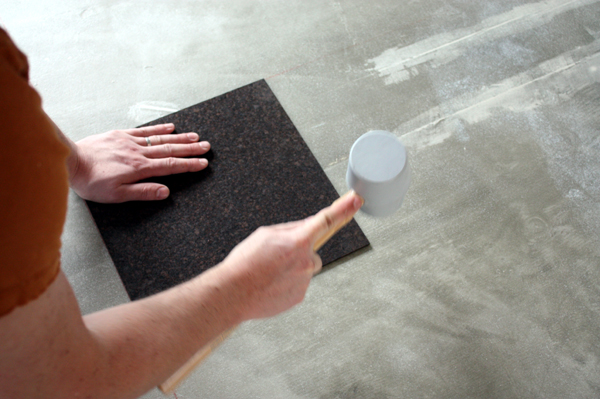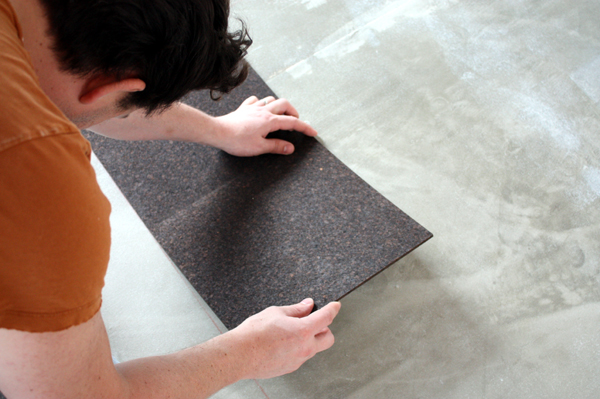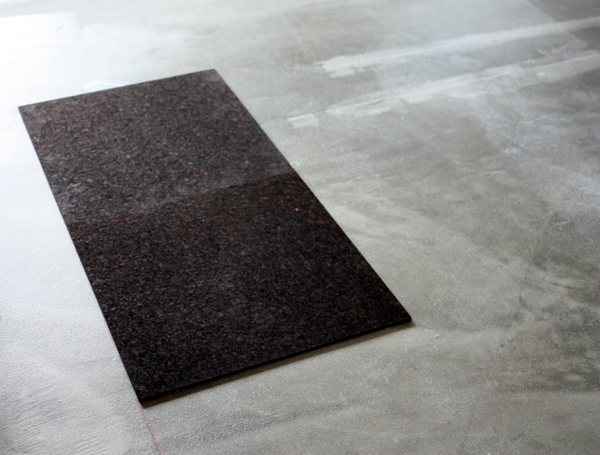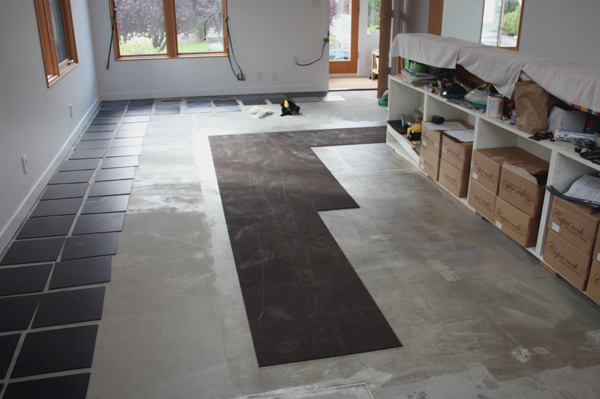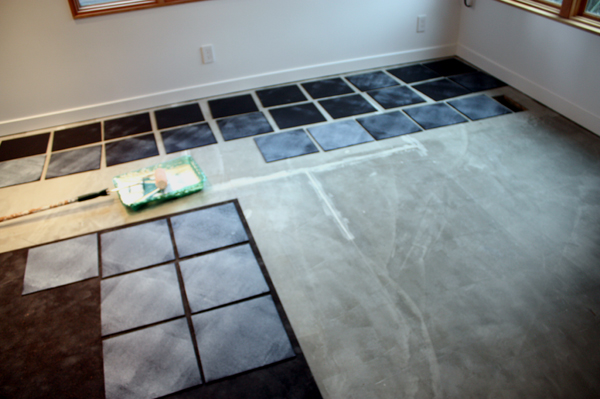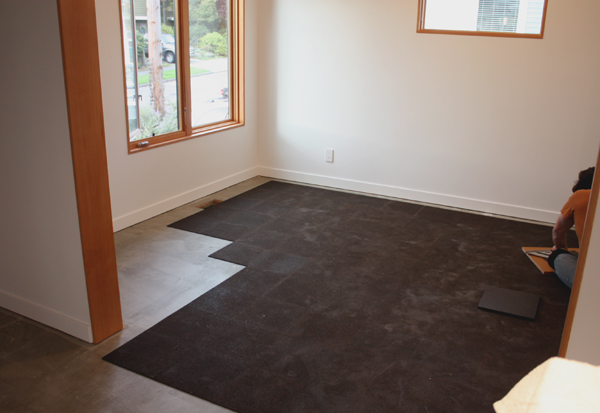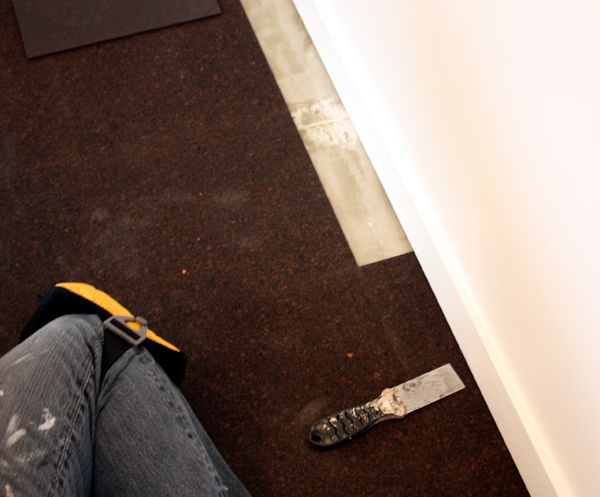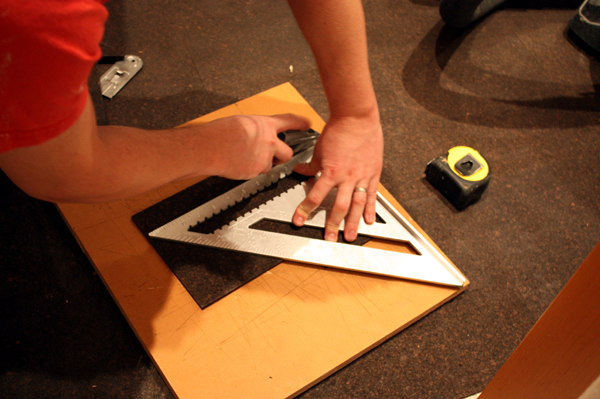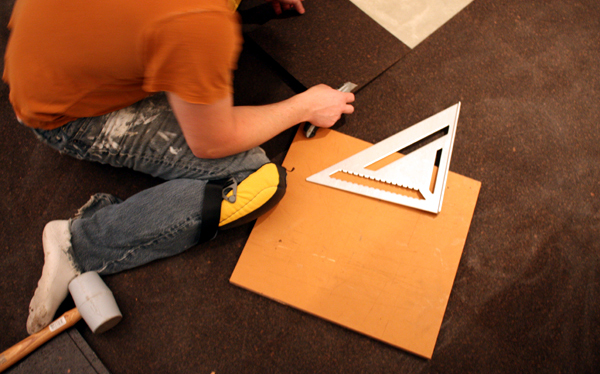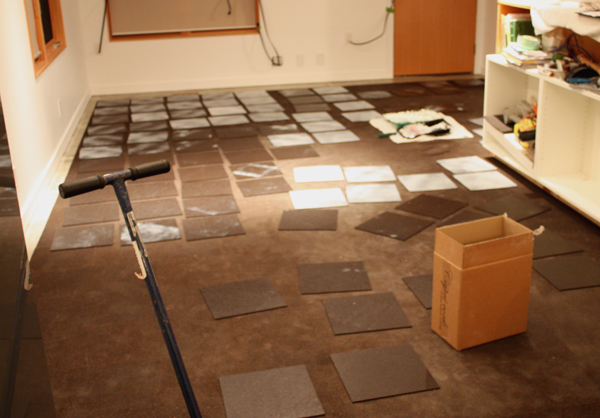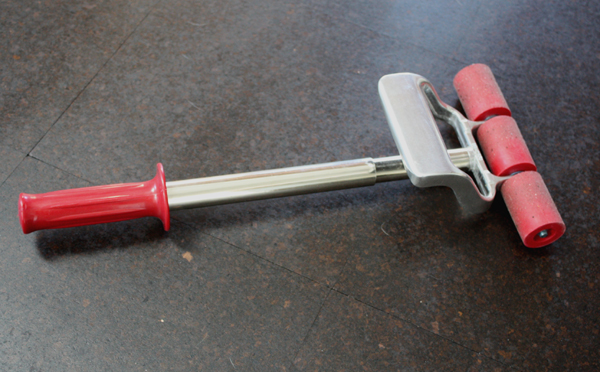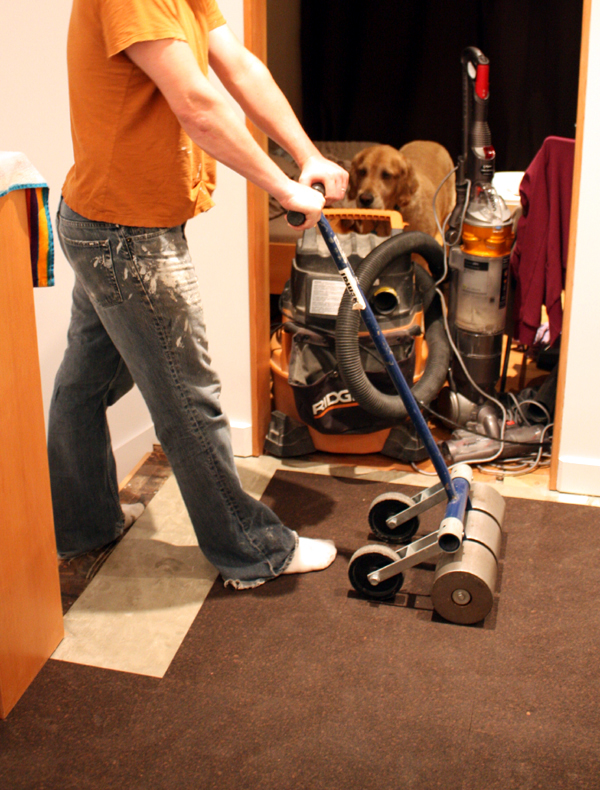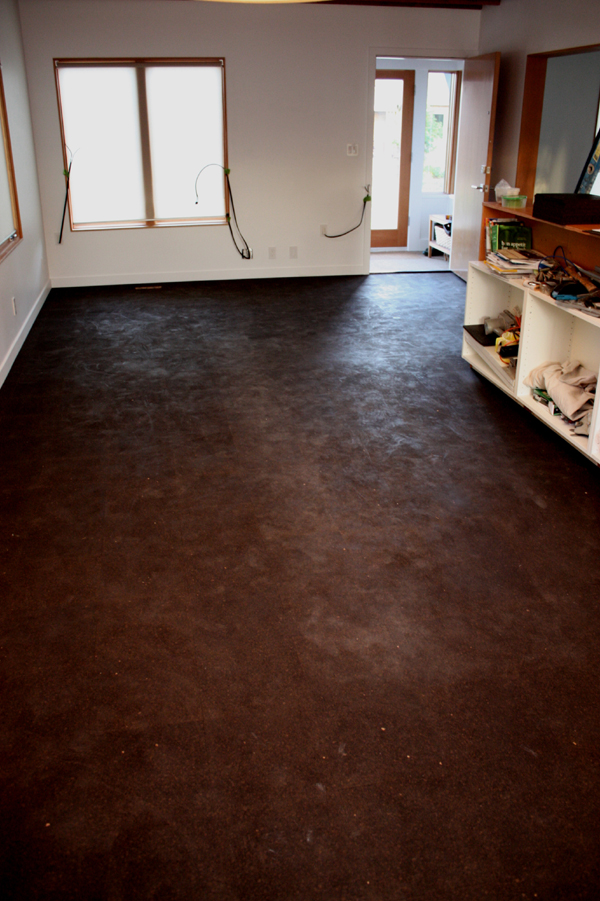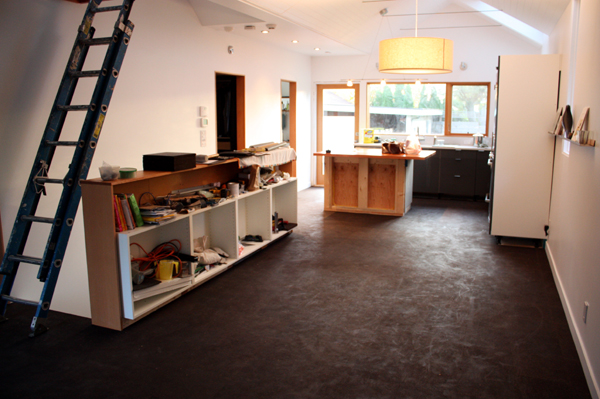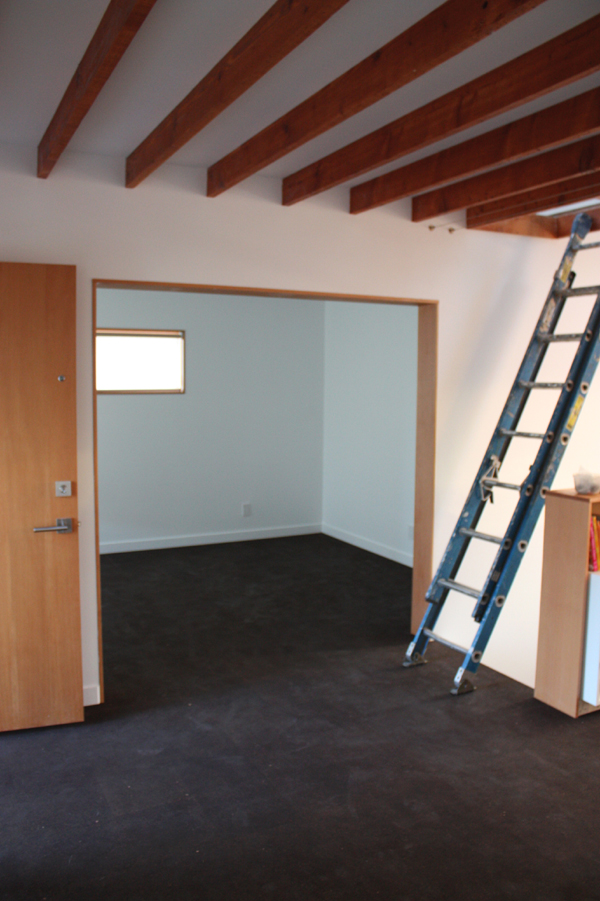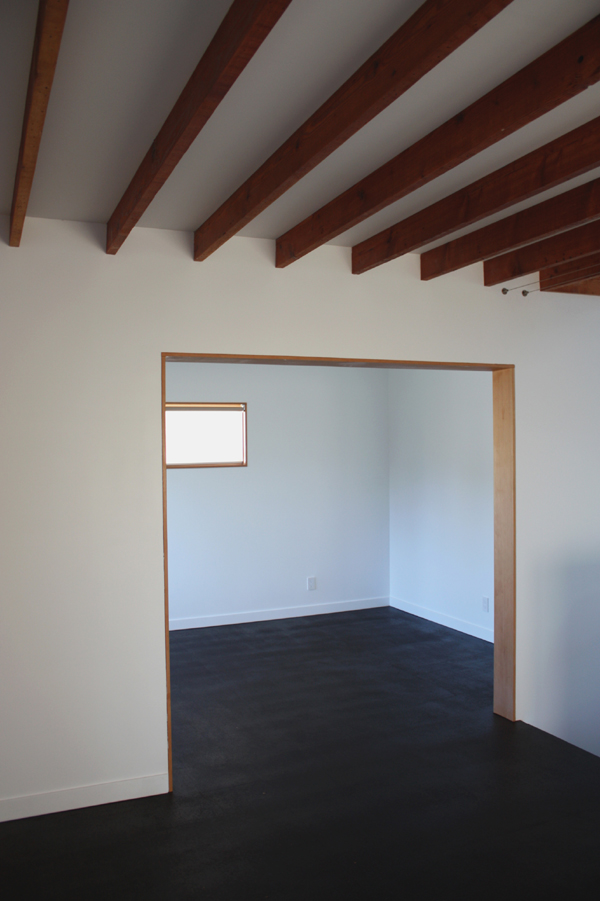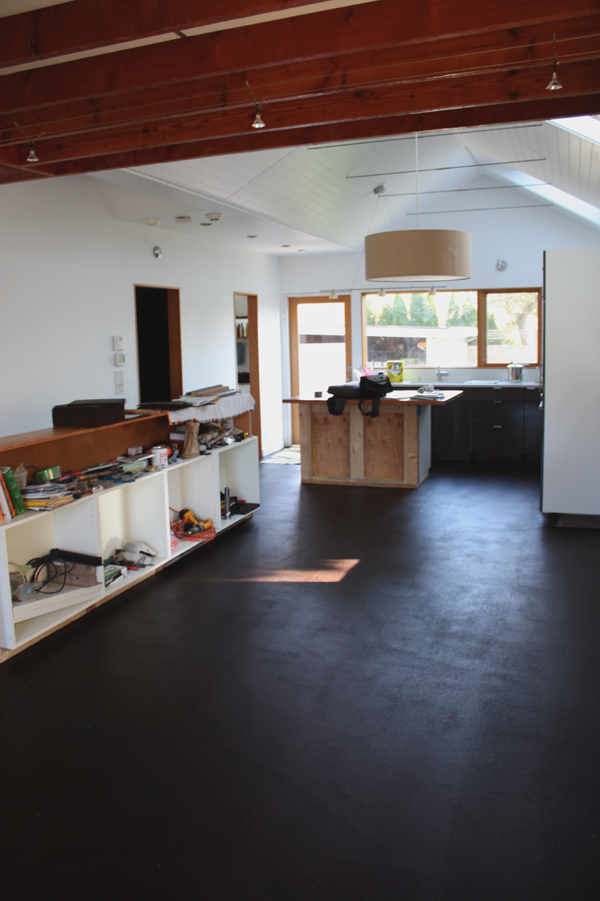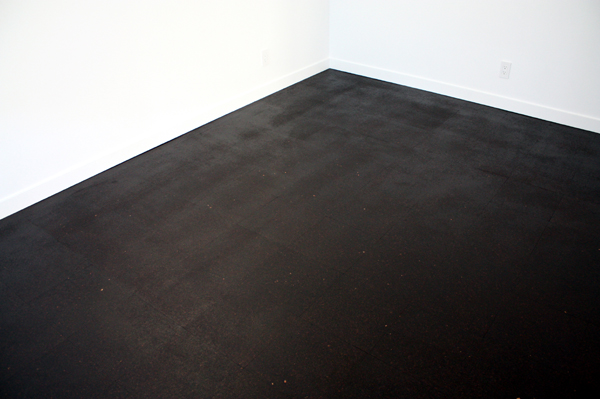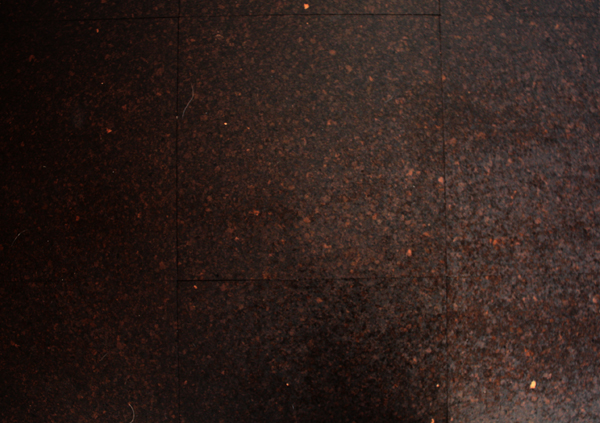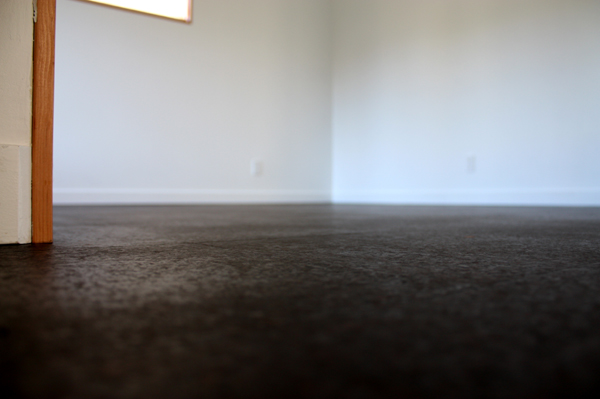[warning: long post alert]
New flooring, finally! First though, to truly appreciate the “after”, let’s reflect on the chezerbey flooring of yore.
The living and dining room were graced with green carpet. Fortunately, there were decent oak floors underneath.
The kitchen had linoleum from an unidentifiable era. It may look retro cool, but any natural oils it once had were now long gone and that thing acted like a sponge, collecting dirt and crumbs and refusing to relinquish them without a lot of scrubbing.
And let’s not forget the astroturf in the back porch (which is now part of our kitchen). HORRID!
In the last six months, we have removed all traces of bad flooring and installed a new subfloor over the original fir floors (which were under all the other gunk). Even though the oak could have been refinished, we would have had a funky elevation change and in the interest of not having a giant threshold across our new cohesive “great room” space, we opted to cover it. The added layer also made the floor more stable, reducing any creaky spots.
Our first step was to prep the new subfloor. Even though we installed it to be perfectly level, cork is susceptible to imperfections telegraphing through, so this meant we needed to fill all of the plywood joints, indentions from screw heads, etc. That’s right, it was time for some self leveling compound.
First though, we needed to paint on a coat of latex primer for better adhesion to the subfloor. We used this product from Sakrete.
Since aesthetics weren’t important, we used a couple cheapo rollers for the job.
Poor Bailey, trapped in the bedroom by the two things he fears the most.
The primer dried quickly and left a shiny, slightly tacky surface.
I wish we had more pictures to share of the self leveling compound process, but honestly, it was a bit chaotic. The directions advised not to mix more than could be worked in 15 minutes(!). So we messed around with trying to mix a half bag which meant estimating the mix and then converting the appropriate amount of water from liters to gallons. (We also added some of the latex primer to the mix to give it some elasticity.) Let’s just say we didn’t get it perfect the first time around and the process generally went something like this:
“More water!”
“We need to mix this more!”
“Rags! Quick!”
“It’s already curing!”
“AHHHHHHH!”
Fortunately, Kyle soon got the hang of it and it turned out fine. He ended up troweling it on to make sure the mixture spread into every nook and cranny.
As soon as we were done, we found ourselves stuck outside and it had just started to rain. After rinsing off our tools, we made our way up through the basement and jumped from the top of the stairs to bedroom where we hung out until the floors were dry (or almost dry, as evidenced by all of our footprints, most of which lead to the fridge).
I really think Bailey could care less about the condition of the floors. This marked the end of Day 1 (last Saturday).
On to Day 2 (last Sunday) – there were still some areas that needed leveling out – nothing a little spackle couldn’t handle though.
After the spackle dried, Kyle sanded the areas smooth.
With a fresh coat of spackle dust all over the floors, we ran the vacuum through before laying any tiles. Mr. Dyson, we may be pushing the limits on what your products were designed to do.
Before we glued any tiles down, we needed to figure out where to start. This step may have been a bit over the top, but it ended up saving us a lot of headache. First we took a print-out of the plywood layout plan we had done earlier and then took as-built measurements of the space. We then adjusted our floor plan in AutoCad and superimposed a 12″x12″ grid over that. We then moved the grid around until we had found a layout that didn’t have seams in weird places or that would result in tiny strips of cork at the edges. We also wanted to, as much as possible, minimize cork joints that happened directly over plywood joints. Once we found the best compromise between the different factors, we chose a central spot in the living room and (using a 90 degree laser level) snapped a chalk line in both directions, with our starting place being the intersection of the two lines.
We bought 12″x12″ Capri cork tiles from Ecohaus. Typically they come unfinished or pre-finished with polyurethane. Since we wanted the ability to spot repair, we opted for a wax pre-finish. Unfortunately, after the tiles were delivered (months ago) we discovered that there was little to no finish on the tiles. More on that later.
The tiles are adhered with a special adhesive that most closely resembles Elmer’s glue. The process is similar to working with contact cement. You apply a thin coat of glue to the backside of each tile and to the floor and wait for both to dry before installing. We used a couple thin, low nap roller brushes and disposable plastic trays for the job.
We turned our kitchen island into a glue rolling station. Even though our particular tile color was fairly homogenous, we always worked from a minimum of 4 different boxes, mixing the tiles to ensure there would be enough variety.
We also found that rolling the glue on the diagonal kept the roller from accidentally slipping off the edge and getting glue on the sides of the tiles.
First tile!
After the tile is set, a good smack from a soft headed rubber mallet helps ensure that both surfaces are in contact with each other.
For the subsequent tiles, we found laying them at a slight angle and adjacent to a previously installed tile produced a good, tight fit.
This isn’t so bad! Only 500 more to go!
One of the challenges was finding space for the tiles to dry once they’d been coated with glue. With the tiles and glue we used, we could have applied the glue to the tiles up to 24 hours before installing. If we ever do this again, we may take that route since Kyle could lay them down faster than I could roll them.
The glue goes on opaque and turns clear, but still tacky, when dry enough to install.
We had to custom cut all of the edge tiles, but the process went smoothly with the use of a 12″ speed square, utility knife and small cutting board.
As the night wore on, our energy was dropping and our bodies ached but we had.to.finish.
Every hour or so we stopped to roll the areas that had already been set. We bought a small hand roller for the edges and hard to reach areas.
For the main areas, we rented a 100 lb. roller from Home Depot ($20/24 hrs – the sight of seeing me heave it into the back of the car – priceless). Anyhow, it worked like a champ and was well worth any public embarrassment.
The finished product looked more like suede and was pretty scuffed up from our footprints. We learned later that lower quality tiles can vary in size from tile to tile (!*@?) and we were so grateful that ours were all exactly the same size.
Phew, end of Day 2. Per our original plan, we would have been done at this point. But since there was a glitch with our order, the distributer and manufacturer worked it out so a third-party finisher would come out and do 3 coats of wax finish (using Osmo Wax), with no charge to us. We decided to schedule the 2-day finish job for when we would be out-of-town, since we wouldn’t be able to walk on the floors for those 2-3 days. So while we were at an out-of-state wedding this weekend, our floors were finished (hence the mad dash to get the install done last weekend)! And here is the finished product:
The floors have a matte, more organic looking finish, which we like a lot better than what you might get from a poly-based finish.
The appearance of the cork varies depending on the lighting and what angle you’re looking at. Looking across the room, it reads as a more homogenous, single color flooring, but if you look straight down, you really see the texture and variation of the cork granules.
And the finish is very smooth. For regular cleaning, we’ll just vacuum and use a microfiber cloth mop. The finish can handle a small amount of standing water, but there’s no need to wet mop this floor.
Finally, here’s a peak of the kitchen island against the flooring. The blue-gray high gloss cabinet finish is a chameleon itself, ranging from a light gray to a deep blue-gray depending on the lighting and how you look at it.
So there you have our exhaustive cork experience. Definitely leave a comment or shoot us an e-mail if you have any questions or have gone through the process yourself and have some additional tips to add. (You can also read more about our cork selection process here, here, here and here.) So far, we’re really pleased with how it turned out. In fact, we have (as of today) officially initiated our “no shoes” policy, which is a big milestone because before, it was more of a “no really, don’t take off your shoes” policy.
